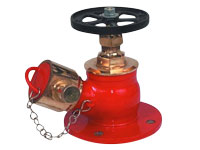អាជ្ញាធរខេត្តហឺណានរបស់ចិន ចង់វិនិយោគលើវិស័យកសិ-ឧស្សាហកម្មកែច្នៃនៅកម្ពុជា
អាជ្ញាធរខេត្តដ៏ធំមួយរបស់ប្រទេសចិន គឺខេត្តហឺណាន ដែលមានប្រជាជនរហូតដល់ជាង ១០០លាននាក់ និងមានសក្តានុពលទីផ្សារពាណិជ្ជកម្មខ្លាំង បានបង្ហាញពីចេតនាចង់វិនិយោគលើវិស័យកសិ-ឧស្សាហកម្មកែច្នៃនៅកម្ពុជា។ នេះបើយោងតាមជំនួបពិភាក្សារវាងឯកឧត្តម លីម ឡោកពិសិដ្ឋ រដ្ឋលេខាធិការក្រសួងពាណិជ្ជកម្ម ជាមួយលោក SUN Shougang អភិបាលរងខេត្តហឺណាន ប្រទេសចិន នៅថ្ងៃទី២៨ ខែឧសភា ឆ្នាំ២០២៥។ ក្នុងជំនួបនេះ ភាគីទាំងពីរបានពិភាក្សាទៅលើការពង្រឹងកិច្ចសហប្រតិបត្តិការទ្វេភាគី ដោយផ្តោតសំខាន់ទៅលើកិច្ចសហប្រតិបត្តិការពាណិជ្ជកម្ម និងកសិ-ឧស្សាហកម្ម។ នាឱកាសនោះ លោកអភិបាលរងខេត្តហឺណាន បានវាយតម្លៃខ្ពស់ចំពោះសារៈសំខាន់នៃការពង្រឹងទំនាក់ទំនងនេះ ដោយបានអនុញ្ញាតឱ្យមន្ទីពាណិជ្ជកម្មខេត្តហឺណានដឹកនាំប្រតិភូទៅស្វែងរកឱកាសធ្វើពាណិជ្ជកម្ម និងវិនិយោគលើវិស័យកសិ-ឧស្សាហកម្មកែច្នៃនៅកម្ពុជានៅក្នុងឆ្នាំនេះផងដែរ។ ជាមួយគ្នានេះដែរ ឯកឧត្តមរដ្ឋលេខាធិការក្រសួងពាណិជ្ជកម្ម ក៏បានលើកទឹកចិត្តឱ្យក្រុមហ៊ុនចិនពង្រីកទំហំនាំចូលផលិតផលសំខាន់ៗរបស់កម្ពុជាដូចជា៖ ស្វាយចន្ទី ដំណាប់ស្វាយ និងចេក ព្រមទាំងពិចារណាក្នុងការវិនិយោគដោយផ្ទាល់លើវិស័យកសិ-ឧស្សាហកម្មកែច្នៃ ដើម្បីគាំទ្រផលិតកម្មដែលមានតម្លៃបន្ថែម។ បន្ទាប់ពីជំនួបពិភាក្សានេះរួច ប្រតិភូក្រសួងពាណិជ្ជកម្ម ក៏បានជួបពិភាក្សាជាមួយនឹង លោកស្រី CHEN Xuemei ប្រធានក្រុមហ៊ុន Chen Sun Fruits and Vegetable Trading Co., Ltd. ដែលជាក្រុមហ៊ុនបោះដុំផ្លែឈើ និងទំនិញកសិផលដ៏ធំនៃខេត្តហឺណាន ខណៈកន្លងមកក្រុមហ៊ុននេះក៏បាននាំចូលផ្លែឈើ និងផលិតផលកសិផលពីកម្ពុជាជាច្រើនសម្រាប់ចែកចាយទៅកាន់ទីផ្សារនៃខេត្តហឺណានផងដែរ។ គួររម្លឹកថា […]
ក្រសួងការងារកម្ពុជា និងមូលនិធិការងារអន្តរជាតិជប៉ុន រួមគ្នាពង្រឹងគាំទ្រអ្នកសេដ្ឋកិច្ចក្រៅប្រព័ន្ធ
ក្រសួងការងារ និងបណ្ដុះបណ្ដាលវិជ្ជាជីវៈរបស់កម្ពុជា រួមជាមួយមូលនិធិការងារអន្តរជាតិជប៉ុន (JILAF) បានចុះហត្ថលេខាលើអនុស្សរណៈនៃការយោគយល់គ្នា ដើម្បីពង្រឹងកិច្ចសហប្រតិបត្តិការក្រោមគម្រោងគាំទ្រសកម្មភាពថ្នាក់មូលដ្ឋាន តាមរយៈបណ្ដាញនិយោជក និងកម្មករនិយោជិតអន្ដរជាតិ។ អនុស្សរណៈនេះ ត្រូវបានចុះនៅថ្ងៃទី២៦ ខែឧសភា ឆ្នាំ២០២៥ នៅទីក្រុងតូក្យូ ប្រទេសជប៉ុន ក្នុងគោលបំណងជំរុញការងារសមរម្យ និងការធ្វើឱ្យកាន់តែប្រសើរឡើងនូវជីវភាពរបស់អ្នកធ្វើការនៅក្នុងសេដ្ឋកិច្ចក្រៅប្រព័ន្ធនៅកម្ពុជា តាមរយៈការបណ្តុះបណ្ដាលវិជ្ជាជីវៈ ការរៀបចំសិក្ខាសាលាស្ដីពីការគ្រប់គ្រងហិរញ្ញវត្ថុ និងប្រព័ន្ធគាំពារសង្គមនៅកម្ពុជា។ បន្ថែមពីនេះ អនុស្សរណៈនេះ ជាការសន្យារបស់មូលនិធិការងារអន្តរជាតិជប៉ុន និងថ្នាក់ដឹកនាំក្រសួងសុខាភិបាល ការងារ និងសុខុមាលភាពជប៉ុន និងការិយាល័យអង្គការអន្ដរជាតិខាងការងារប្រចាំប្រទេសជប៉ុន ក្នុងការពង្រឹងកិច្ចសហប្រតិបត្តិការជាមួយក្រសួងការងារ និងបណ្ដុះបណ្ដាលវិជ្ជាជីវៈរបស់កម្ពុជា ឱ្យកាន់តែស៊ីជម្រៅបន្ថែមទៀត។ ផ្អែកតាមអនុស្សរណៈនេះ វាជាការលើកកម្ពស់ជីវភាពរស់នៅរបស់អ្នកធ្វើការនៅក្នុងសេដ្ឋកិច្ចក្រៅប្រព័ន្ធ ដែលរួមមានជាអាទិ៍៖ អ្នកបម្រើការងារក្នុងសហគ្រាសធុនមីក្រូ តូច និងមធ្យម ដែលមិនបានចុះបញ្ជីការផ្លូវការ, អ្នកបម្រើក្នុងផ្ទះ, បុគ្គលស្វ័យនិយោជន៍ ដូចជា អ្នកបើកបររ៉ឺម៉កកង់បី (តុកតុក), អាជីវករលក់ដូរតាមផ្លូវ, កសិករខ្នាតតូច, អ្នកធ្វើការដោយប្រើថ្នាលបច្ចេកវិទ្យា និងបុគ្គលដទៃទៀតដែលបំពេញការងារដោយគ្មានកិច្ចសន្យាការងារផ្លូវការ គ្មានប្រាក់ចំណូលច្បាស់លាស់ ឬពុំទាន់ទទួលបានអត្ថប្រយោជន៍របបសន្ដិសុខសង្គមជាមូលដ្ឋាន។ បើតាម ឯកឧត្ដម ហេង សួរ បានឱ្យដឹងក្នុងពិធីចុះហត្ថលេខាខាងលើនេះថា មូលនិធិការងារអន្តរជាតិជប៉ុន (JILAF) បានសហការជាយ៉ាងជិតស្និទ្ធជាមួយក្រសួងការងារ […]
ស្ពានអាកាសភ្លោះភ្ជាប់ព្រំប្រទល់រវាងរាជធានីភ្នំពេញ និងខេត្តកណ្តាល សង់បាន ៨៥%
គិតមកដល់ពេលនេះ ការដ្ឋានសាងសង់ស្ពានអាកាសសម្តេចធិបតី ហ៊ុន ម៉ាណែត ស្ថិតនៅតាមបណ្ដោយមហាវិថីសម្ដេចតេជោ ហ៊ុន សែន ប្រសព្វ និងផ្លូវជាតិលេខ២ ដែលជាព្រំប្រទល់រវាង រាជធានីភ្នំពេញ និងខេត្តកណ្តាល សម្រេចបាន ៨៥ភាគរយហើយ ខណៈស្ពានអាកាសភ្លោះថ្មីនេះ ក៏បានឈានដល់ដំណាក់កាលតភ្ជាប់តួស្ពានរួចរាល់ហើយផងដែរ។ ពិធីនេះតភ្ជាប់តួស្ពាននេះ ត្រូវបានធ្វើឡើងនៅថ្ងៃទី៩ ខែមិថុនា២០២៥នេះ ក្រោមអធិបតីភាពឯកឧត្ដម ឃួង ស្រេង អភិបាលរាជធានីភ្នំពេញ និងពីមន្ត្រីពាក់ព័ន្ធជាច្រើនរូបទៀត។ លោក សាំ ពិសិដ្ឋ ប្រធានមន្ទីរសាធារណការ និងដឹកជញ្ជូនរាជធានីភ្នំពេញ បានឱ្យដឹងថា៖ ពេលនេះស្ពានអាកាសសម្តេចធិបតី ហ៊ុន ម៉ាណែត ទាំងមូលសម្រេចបានប្រមាណ ៨៥ភាគរយហើយ ក្នុងនោះស្ពានអាកាសដែលមានទិសដៅពីភ្នំពេញ ទៅអាកាសយានដ្ឋានអន្តរជាតិតេជោខេត្តកណ្តាល នឹងរួចរាល់នៅចុងខែមិថុនានេះ។ ចំណែកស្ពានអាកាសដែលមានទិសដៅពីអាកាសយានដ្ឋានអន្តរជាតិតេជោមកភ្នំពេញវិញនឹងរួចរាល់នៅចុងខែកក្កដាឆ្នាំ២០២៥ខាងមុខ។ សូមជម្រាប់ថា ស្ពានអាកាសភ្លោះនេះ ជាប្រភេទស្ពានបេតុងអាមេ ( ធ្នឹមរាងអក្សរ I )មានបណ្ដោយ ស្ពាន៦២២ម៉ែត្រ ក្នុងនោះស្ពានទី១: ផ្លូវឯកទិសមានទិសដៅតាមបណ្តោយមហាវិថីសម្តេចតេជោ ហ៊ុន សែន ឆ្លងកាត់ផ្លូវជាតិលេខ២ឆ្ពោះទៅកាន់អាកាសយានដ្ឋានអន្តរជាតិតេជោ។ ស្ពានទី២: ផ្លូវឯកទិសមានទិសដៅឆ្លងកាត់ផ្លូវជាតិលេខ២ពីអាកាសយានដ្ឋានអន្តរជាតិតេជោ […]
កម្ពុជា-ជប៉ុន រួមគ្នាជំរុញការអភិវឌ្ឍន៍វិស័យកសិកម្មទំនើប និងឆ្លាតវៃ
កម្ពុជា-ជប៉ុន ប្តេជ្ញារួមគ្នាជំរុញកិច្ចសហប្រតិបត្តិការក្នុងការអភិវឌ្ឍន៍វិស័យកសិកម្ម ដោយផ្តោតលើផ្នែកកសិកម្មឆ្លាតវៃ ដែលសំដៅដល់ការធានានូវសន្តិសុខស្បៀង ដើម្បីលើកកម្ពស់ប្រព័ន្ធស្បៀងប្រកបដោយចីរភាព។ នេះបើយោងតាមជំនួបពិភាក្សារវាងឯកឧត្តម ប្រាក់ ដាវីដ រដ្ឋលេខាធិការក្រសួងកសិកកម្ម រុក្ខាប្រមាញ់ និងនេសាទកម្ពុជា ជាមួយលោក HAGIWARA Hideki ប្រធានប្រតិភូក្រសួងកសិកម្ម រុក្ខាប្រមាញ់ និងនេសាទ នៃប្រទេសជប៉ុន នៅថ្ងៃទី២ ខែមិថុនា ឆ្នាំ២០២៥។ ជំនួបពិភាក្សានេះ ភាគីទាំងពីរ បានផ្តោតលើផែនការសហប្រតិបត្តិការអាស៊ាន-ជប៉ុន MIDORI និងការពន្យល់លម្អិតបន្ថែមអំពីគម្រោងអភិវឌ្ឍន៍ក្នុងវិស័យកសិកម្ម ដោយផ្តោតលើផ្នែកកសិកម្មឆ្លាតវៃ ការអភិវឌ្ឍធនធានមនុស្ស ការកសាងសមត្ថភាព ការគ្រប់គ្រងតំបន់ព្រៃឈើ និងគម្រោងសក្ដានុពលផ្សេងៗទៀតសម្រាប់កិច្ចសហប្រតិបត្តិការទេ្វភាគី។ នាឱកាសនោះ ឯកឧត្តម ប្រាក់ ដាវីដ រដ្ឋលេខាធិការបានថ្លែងអំណរគុណចំពោះរដ្ឋាភិបាលជប៉ុន សម្រាប់ការគាំទ្រជាបន្តបន្ទាប់លើវិស័យជាច្រើន ជាពិសេសវិស័យកសិកម្ម ដែលមានសារៈសំខាន់សម្រាប់សេដ្ឋកិច្ចកម្ពុជា និងសុខុមាលភាពរបស់ប្រជាពលរដ្ឋ។ ឯកឧត្តមបានសង្កត់ធ្ងន់ថា ការផ្តល់អាទិភាពលើវិស័យកសិកម្មឆ្លាតវៃមិនត្រឹមតែបង្កើនសន្តិសុខស្បៀងប៉ុណ្ណោះទេ ថែមទាំងមានគោលបំណងឱ្យមានតុល្យភាពប្រកបដោយនិរន្តរភាពរវាងកំណើនសេដ្ឋកិច្ច និងការអភិរក្សបរិស្ថាន។ ឯកឧត្តមបានធានាថាកសិករនឹងទទួលបានអត្ថប្រយោជន៍យ៉ាងច្រើនព្រោះពួកគេនឹងអាចរក្សាប្រតិបត្តិការរបស់ពួកគេបានយ៉ាងរលូនសូម្បីតែក្រោយការបញ្ចប់គម្រោងក៏ដោយ។ ពាក់នឹងវិស័យកសិកម្មនេះដែរ នៅក្នុងកិច្ចអន្តរាគមន៍នៃពិធីសមាជរដ្ឋសភា និងព្រឹទ្ធសភា នាថ្ងៃទី៣ ខែមិថុនា ឆ្នាំ២០២៥នេះ សម្តេចនាយករដ្ឋមន្រ្តី ហ៊ុន ម៉ាណែត បានប្រកាសថា […]
កម្ពុជា-ជប៉ុន រួមគ្នាបង្កើនឱកាសការងារដល់និសិ្សតកម្ពុជាផ្នែកព័ត៌មានវិទ្យា តាមរយៈការអនុវត្តកម្មវិធី Japanese IT Pathway
ក្រសួងប្រៃសណីយ៍និងទូរគមនាគមន៍កម្ពុជា ជាមួយនិងក្រុមហ៊ុនបច្ចេកវិទ្យាឌីជីថលប្រមាណ ១៣៥ក្រុមហ៊ុន ដែលមានមូលដ្ឋាននៅទីក្រុងតូក្យូនិងទីក្រុងអូសាកា ប្រទេសជប៉ុន កំពុងសហការរួមគ្នាជំរុញការអនុវត្តកម្មវិធី Japanese IT Pathway។ កម្មវិធីនេះបង្កើតឡើងដើម្បីជួយនិស្សិតកម្ពុជា ជាពិសេសអ្នកដែលនៅក្នុងវិស័យបច្ចេកវិទ្យា និងឌីជីថល ទទួលបានភាពងាយស្រួលក្នុងការរកការងារធ្វើនៅក្នុងក្រុមហ៊ុនបច្ចេកវិទ្យានានានៅក្នុងប្រទេសជប៉ុន។ នេះបើយោងតាមជំនួបពិភាក្សារវាង ឯកឧត្ដមរដ្ឋមន្រ្តី ជា វ៉ាន់ដេត ជាមួយក្រុមហ៊ុនបច្ចេកវិទ្យាឌីជីថលនានា នៅប្រទេសជប៉ុន កាលពីថ្ងៃទី១-២ ខែមិថុនា ឆ្នាំ២០២៥ ក្រោមការរៀបចំដោយសមាគមកម្ពុជា-ជប៉ុន និងក្រុមហ៊ុន Next Make របស់ជប៉ុន។ ជំនួបនោះ មានគោលបំណងជំរុញនិងពង្រឹងការអនុវត្តកម្មវិធី Japanese IT Pathway ប្រកបដោយជោគជ័យ ដោយសារក្រុមហ៊ុនទាំងនេះ អាចជាដៃគូក្នុងការទទួលយកនិស្សិតកម្ពុជាដែលបានបញ្ចប់ការសិក្សាក្រោម កម្មវិធី Japanese IT Pathway មកបម្រើការនៅប្រទេសជប៉ុន។ ក្នុងឱកាសនោះ ឯកឧត្តម ជា វ៉ាន់ដេត ក៏បានផ្សព្វផ្សាយនិងជំរុញការប្រើប្រាស់ថ្នាលផ្ទៀងផ្ទាត់ឯកសារ VERIFY.GOV.KH នៅប្រទេសជប៉ុន ព្រមទាំងជំរុញឱ្យក្រុមហ៊ុនបច្ចេកវិទ្យាឌីជីថលទាំងនោះមកវិនិយោគនៅកម្ពុជា ជាពិសេសក្នុងសួនឌីជីថលផងដែរ។ គួរបញ្ជាក់ថា កម្មវិធី Japanese IT Pathway គឺជាកម្មវិធីមួយរៀបចំឡើងក្រោមកិច្ចសម្របសម្រួលរបស់ […]
រយៈពេល ៥ខែ ដើមឆ្នាំ២០២៥ ទេសចរអាមេរិកជាប់លេខ១ ក្នុងការទិញសំបុត្រចូលទស្សនាប្រាសាទអង្គរវត្ត
រយៈពេល ៥ខែ ដើមឆ្នាំ២០២៥ កម្ពុជាទទួលបានទេសចរអាមេរិកច្រើនជាងគេ គឺជាប់លេខ១ ក្នុងការទិញសំបុត្រចូលទស្សនារមណីយដ្ឋានអង្គរ។ នេះបើតាមរបាយការណ៍របស់គ្រឹះស្ថានអង្គរ កាលពីពេលថ្មីៗនេះ។ របាយការណ៍នេះ បានឱ្យដឹងថា រយៈពេល៥ខែនេះ មានភ្ញៀវទេសចរអន្តរជាតិចូលទស្សនាអង្គរចំនួន ៥២៧.៥៧៧នាក់ កើនឡើង ១១,៧១ភាគរយ ធៀបនឹងឆ្នាំ២០២៤ និងរកចំណូលបានចំនួន ២៤.៥៦៩.០២៤ដុល្លារ កើនឡើង ១០,៦៤ភាគរយ ធៀបនឹងរយៈពេលដូចគ្នា កាលពីឆ្នាំ២០២៤។ (អានបន្ថែម) ដោយឡែក បើក្រឡេកមើលតួលេខក្នុងខែឧសភាតែមួយ ឃើញថាភ្ញៀវទេសចរបរទេសដែលទិញសំបុត្រចូលទស្សនារមណីយដ្ឋានអង្គរ គឺភាគច្រើនជាភ្ញៀវទេសចរចិនទៅវិញ ដែលបានជាប់លំដាប់លេខ១, រីឯសហរដ្ឋអាមេរិកបានឈរនៅលំដាប់លេខ២, អង់គ្លេសលេខ៣, អូស្ត្រាលីលេខ៤, បារាំងលេខ៥ និងជប៉ុនលេខ៦។ អ្វីដែលជាការកត់សម្គាល់គឺ ក្នុងរយៈពេល ៥ខែ បើគិតចាប់ពីខែមករាដល់ខែឧសភាវិញ ភ្ញៀវទេសចរអន្តរជាតិដែលទិញសំបុត្រច្រើនជាងគេ គឺសហរដ្ឋអាមេរិកជាប់លេខ១, អង់គ្លេសលេខ២, ប្រទេសបារាំងលេខ៣, ចិនលេខ៤ និង ប្រទេសកូរ៉េខាងត្បូងលេខ៥។ យ៉ាងណាក៏ដោយ ក្រសួងទេសចរណ៍ បានព្យាករណ៍ថា ក្នុងឆ្នាំ២០២៥នេះ កម្ពុជានឹងទទួលបានភ្ញៀវទេសចរបរទេសប្រមាណ ៧,៥លាននាក់ ដែលនឹងនាំចំណូលចូលសេដ្ឋកិច្ចជាតិប្រមាណជាង ៥ ពាន់លានដុល្លារ។ - […]



 English
English







